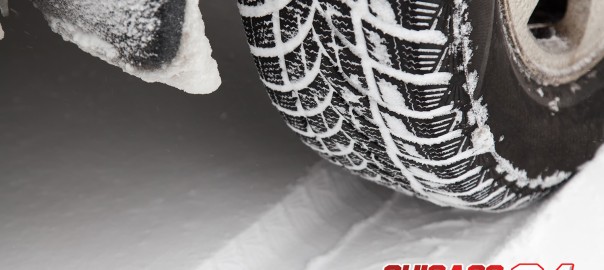Towing Chicago regularly provides towing service for pickup trucks, vehicles that boast great power that’s often bolstered by strong traction. Factors like open differentials are essential for safe vehicle turning especially in rainy or snowy weather – you don’t want a single wheel to keep spinning when the other three wheels have strong traction. Traction assistants are offered by many car manufacturers through anti lock braking systems that keep wheel spinning at the same speed. Here’s some of the essential traction aspects that you will need when looking for safe vehicles.
Antilock Braking Systems
Known as ABS traction control, these systems often are featured in most pickup trucks and SUVs, with some vehicle makers making off-road versions. ABS vehicles are fit with sensors that can detect if a wheel is locked when it needs to be spinning, or to brake wheels that are spinning faster than the opposite wheel on the same axle in order to equalize them. These systems aren’t too expensive, but they can cause loud grinding noises, easily get overheated, or stress out the brake system. They can be turned on and off through button control, and respond to brake or throttle systems.
Limited Slipping Differentials
The two types of these systems are gear driven or clutch driven. Gear driven differentials, aka Torsen differentials, utilize worm screws and gear to moderate the torque sent to each of the vehicle’s axles. Gear driven limited slipping differentials don’t have banging or slamming because they are constantly engaged, and can work with normal gear oil. They work with torque multiplying systems that multiply torque on low traction tires and send it to high traction tires. One con to these systems is that if a tire has no traction, it can’t be multiplied and send to another tire due to the limitations of mathematical zero based equations. Sometimes, braking and throttling at the same time will allow for enough torque for the system to effectively transfer to the necessary tire.
Clutch driven differential systems work like a manual transmission car clutch, but have a group of clutch plates that add torque to the traction wheel. They are very sensitive to the difference in speed between wheels, so the faster one wheel spins compared to its partner, the more torque gets sent to the traction wheel – allowing for transfer of torque to the traction wheel even when it’s opposite wheel has no traction. Cons of clutch driven differential systems is that they wear out over time and will need to be upgraded/or rebuilt, as well as the fact that they require friction additives in gear oil.
Locking Differential Systems
These systems force both wheels to spin at the same speed and a equal torque split between wheels; they are available in automatic locking and electronic locking iterations. Automatic locking differentials are turned on when a single wheel spins around 100 rotations per minute faster than it’s axle-paired wheel. This difference makes the axles lock together – which can sound a loud bang, and even damage the axles if there’s a big traction difference – but often works fine in most environments. These lockers can even engage when one wheel has no traction or gets lifted off the ground, but the driver cannot choose to engage or turn off the automatic locking differential system.
Electronic locking differentials use solenoids or electromagnets to turn on the locker, and are often found in Toyota, Ram, Ford, and Nissan SUVs and trucks. They predictably operate, and allow the driver to choose when to turn the system on or off, but the majority of them can only be turned on when the vehicle is in a four-low state – and never while it’s in motion. This can cause issues during normal driving situations when cars hit a slick spot, or if a vehicle gets stuck or really slowed down from spinning a single wheel.

